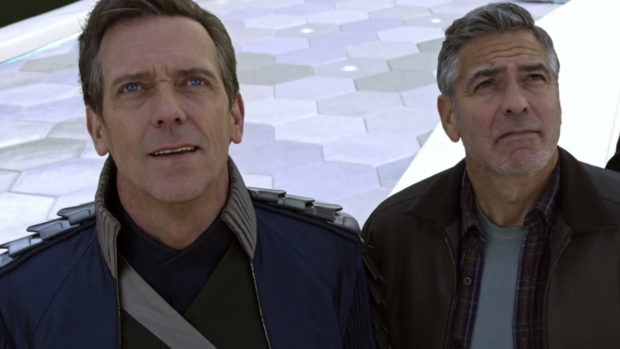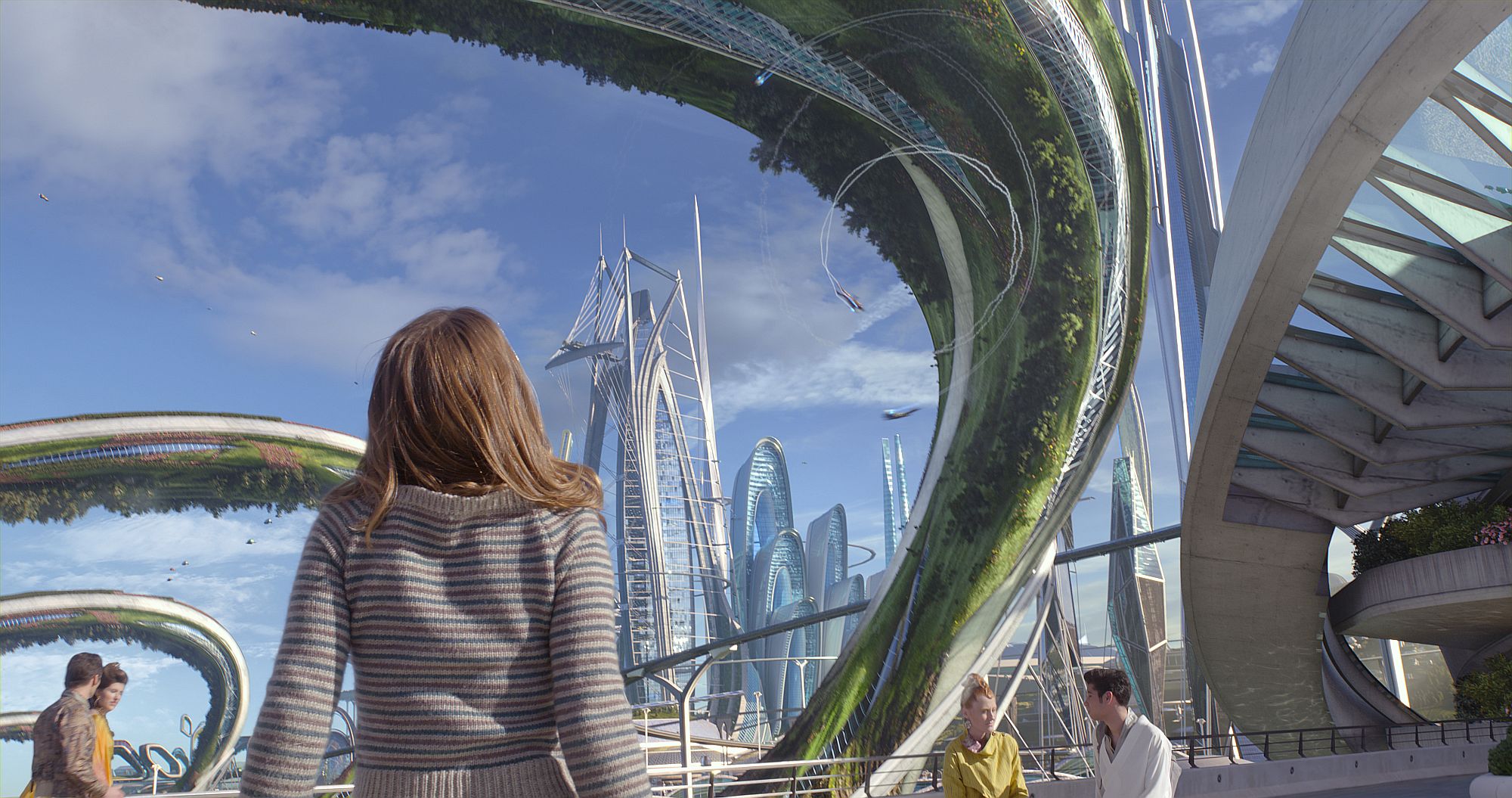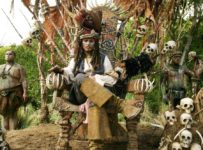“To all who come to this happy place: Welcome. Disneyland is your land. Here age relives fond memories of the past, and here youth may savor the challenge and promise of the future.”
[stextbox id=”grey” caption=”Tomorrowland (2015)” float=”true” align=”right” width=”200″]
Director: Brad Bird
Writers: Damon Lindelof, Brad Bird
Runtime: 120 minutes
Starring: Britt Robertson, George Clooney, Raffey Cassidy, Hugh Laurie, Keegan-Michael Key, Kathryn Hahn
Distributor: Disney
Country: US
[/stextbox]
Anybody who has walked through the gates of a Disney theme park over the last sixty years will be familiar with those words. Part of Walt Disney’s opening day address to the first visitors to Disneyland in 1955, it neatly encapsulates the philosophy Walt held publicly for the future. It was a aspiration that could be seen infused in the spires of the Tomorrowland section of the Disney parks, and later the Experimental Prototype Community of Tomorrow, better known as EPCOT. While those concepts are better known for their geodesic spheres and distinct Space Mountains, Walt actually intended EPCOT to be a community of 20,000 people. It was to be a model for cities of the future, complete with a unique transportation system that would “always be in a state of becoming.” His dream remained just that upon his death in 1966, shortly after unveiling the concept, but Brad Bird has cleverly revived it in a way for the future-focused TOMORROWLAND.
After an awkward direct-to-camera framing narration, design to give audiences an early dose of George Clooney, TOMORROWLAND kicks off at the 1964 New York World’s Fair. Fans will know that this is where Walt Disney unveiled the classic ride “It’s A Small World,” as well as introducing the Audio-Animatronic robots that would later populate the “Pirates of the Caribbean” and “Haunted Mansion” attractions to name a few. Against this backdrop, a young Frank Walker (Thomas Robinson) presents a homemade jetpack to David Nix (Hugh Laurie) for an innovation prize. He’s rejected, but the mysterious girl Athena (Raffey Cassidy) spots promise in him and whisks him away to a futuristic place. Decades later, the rebellious Casey Newton (Britt Robertson) is given a mysterious pin, which appears to open up a portal to that same place. She must seek out an older Frank (Clooney) to help her understand her destiny.
It’s hard to argue with TOMORROWLAND‘s buoyancy, and it is rare to see a studio have such a direct dialogue with its own brand. It is something that Disney used to do all the time, especially when Walt was the public face of the company, but over the course of the last few decades the brand has shifted. It’s certainly not the first time that they have based a film on a theme park ride (Pirates of the Caribbean, Haunted Mansion, and…Country Bears) or the debut of their futurism on screen (Meet the Robinsons), but it is the first time they’ve directly attempted to define what that legacy means in this kind of narrative. It’s incredibly refreshing to see a cinematic vision of the future that isn’t overrun by the robot apocalypse, or is a declining dystopia. In this sense, it comes the closest to Walt Disney’s original vision of a “vista into a world of wondrous ideas…and the hope for a peaceful, unified world.”
Yet TOMORROWLAND is also confused film. On the one hand, it is unabashedly optimistic, a curious combination of the 1960s and 1970s Disney live action films like Escape From Witch Mountain or The Cat From Outer Space, Spielberg’s Close Encounters of the Third Kind with a bit of National Treasure thrown in for good measure. It is also the most overtly political of Disney’s recent fare, condemning climate change deniers but at the same time casting the person who rails against it as the de facto villain. It manages to go from wide-eyed optimism to action oriented street chases and broader humour with the introduction of shop owners Hugo (Keegan-Michael Key) and Ursula (Kathryn Hahn). Yet it commits its biggest mistake in being wholly straightforward, coming down to a clash of wills between the antagonist and our heroes, the antithesis of the unpredictability of the future that underlies the Tomorrowland concept. Director and co-writer Brad Bird mastered this sense of wonder with the final act of Iron Giant, and the kinetic energy of The Incredibles, yet here he seems firmly attached to a monorail track. Perhaps this can be pinned to the presence of Damon Lindelof on co-scripting duties, who similarly struggled to join an existing property to a new story in Prometheus.

Where it doesn’t falter is in the terrific casting. Under The Dome‘s Britt Robertson is a likeable lead, a potential successor to the likes of Hayley Mills, while Clooney serves as a modern day version of the Kurt Russell characters. Raffey Cassidy, the Audio-Animatronic girl, manages to convey a weight of an ageless robot that has seen and felt more than she initially lets on. Robertson in particular has to tread the line between being cloyingly optimistic and the chief protagonist, and role which she undertakes without falling into sentimentality, even if the script does on occasion.
TOMORROWLAND is a missed opportunity. It is easy to see why more references to Walt Disney, originally slated for a “cameo” of sorts in the film, were pulled for fear of this being too much of an ad for Disney. Yet at the same time, the film is in desperate need of some more of that old school magic and fairy dust that permeates all of their physical resorts and parks.
TOMORROWLAND is released in Australia on 28 July 2015 from Disney.





